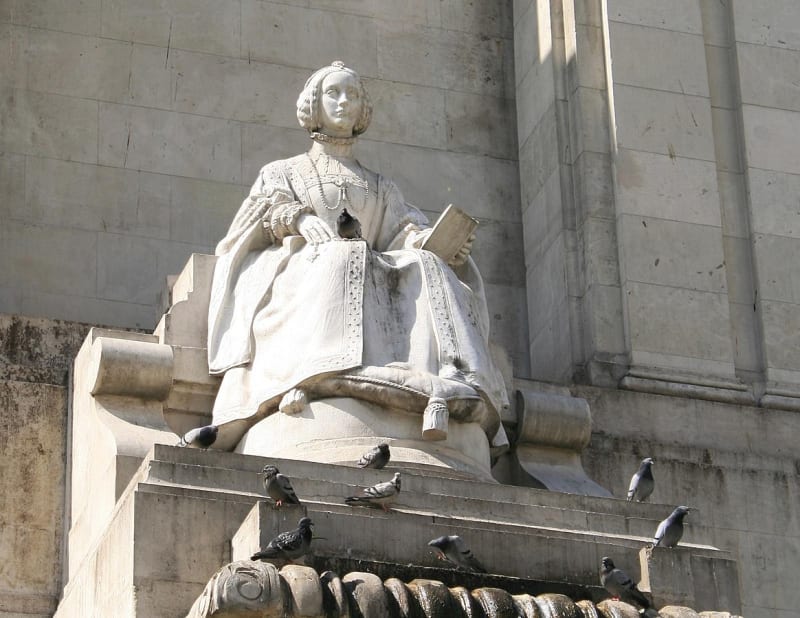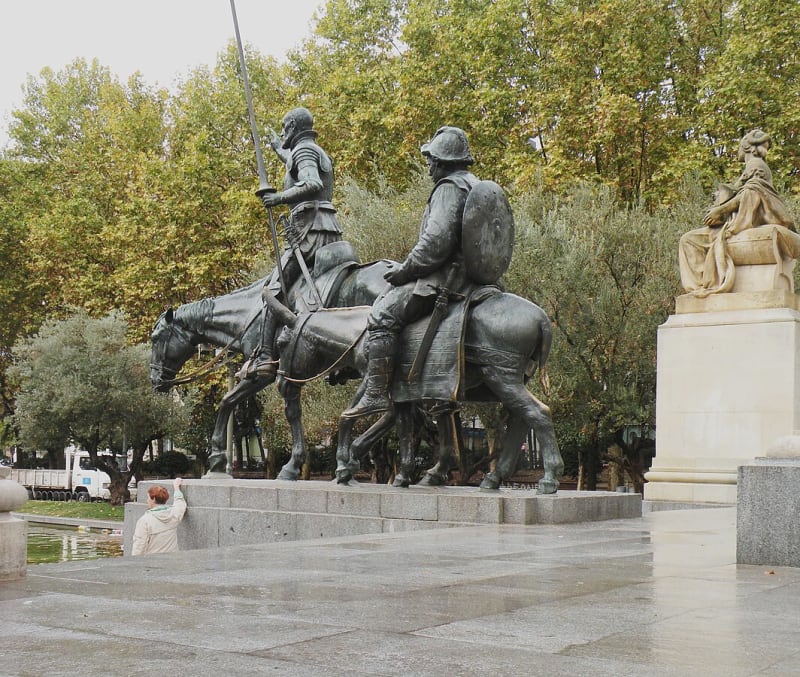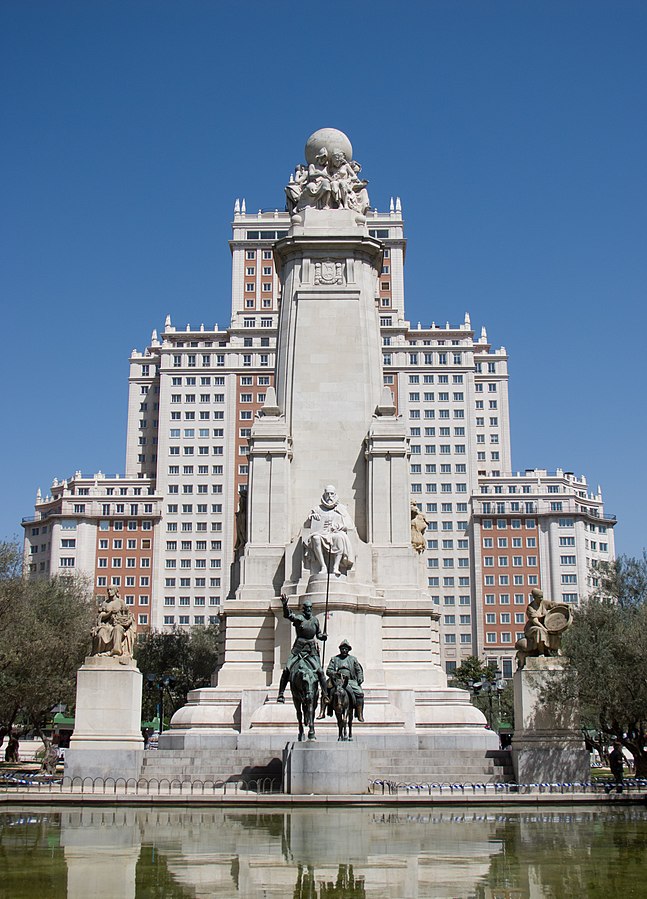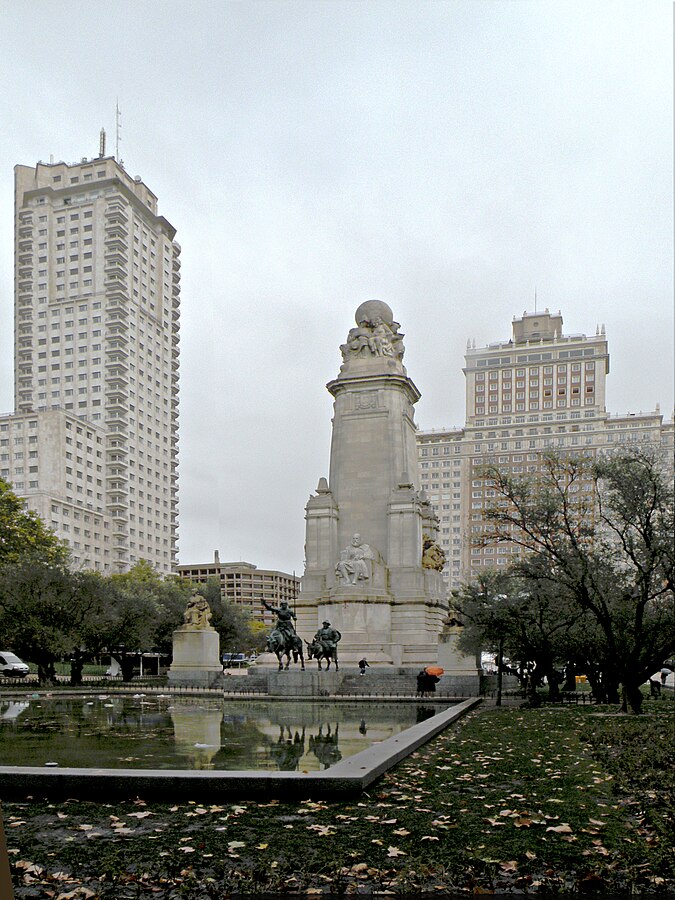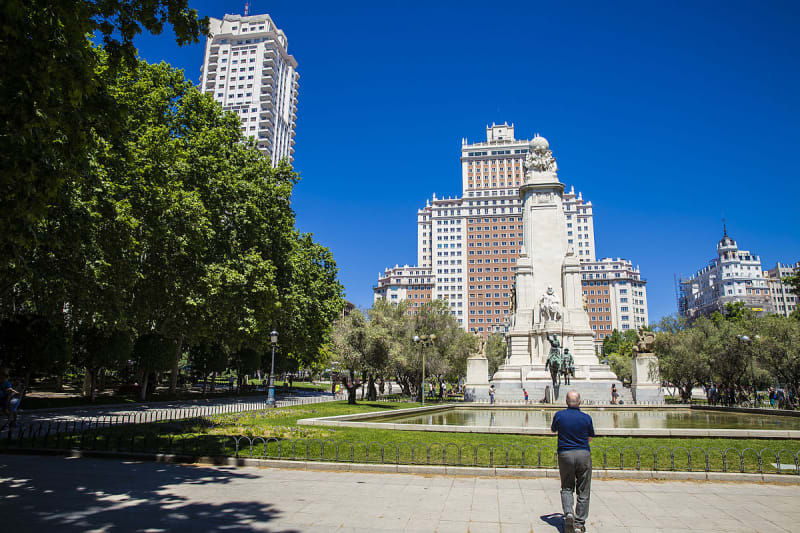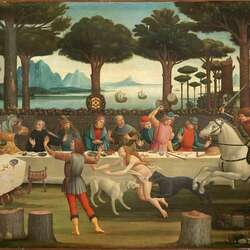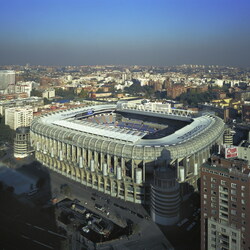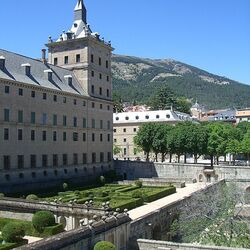Monument to Don Quixote in Madrid
The monument to Don Quixote in Madrid is located on the Plaza de Espana next to the Royal Palace and is part of the complex "Miguel de Cervantes and his heroes". Spaniards are distinguished by their zealous attitude towards their great compatriots. Whenever possible, they try to emphasize their Spanish roots, especially if the celebrity has gained worldwide recognition.
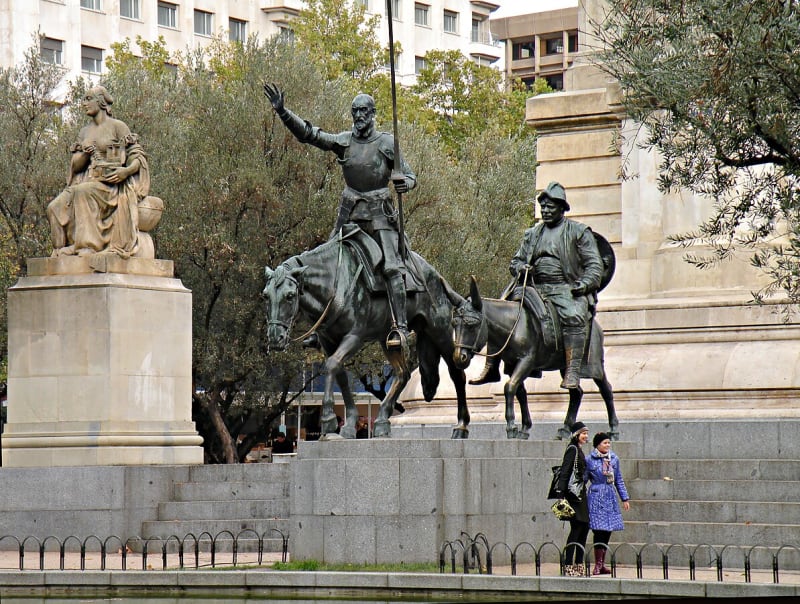
A bit of history
Cervantes' fate was complicated, and his real grave was found only in 2015, although he died of dropsy in 1616. His body was reburied in St. Peter's Cathedral. Holy Trinity in the Spanish capital Madrid. M. de Cervantes' best novel is considered to be "The Cunning Hidalgo Don Quixote of La Mancha". The main characters have monuments all over the world.
On the 300th anniversary of the official death of the great author, the Madrid authorities decided to perpetuate the name of the brilliant compatriot by erecting a monument to Don Quixote. The newly built Plaza de Espana was chosen as the installation location.
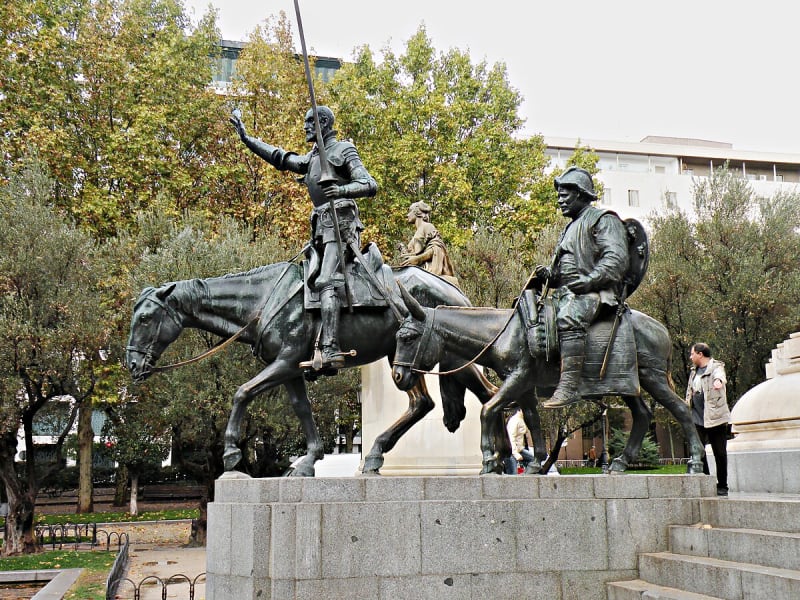
In 1915, a competition was held among architects and sculptors for the best project. The work of architect R. M. Zapatera and sculptor L. Cullo-Valera won. Funds for the construction were collected by a committee specially created in 1920. For help in the construction of the monument, the committee appealed to all Spanish-speaking countries.
Fundraising for the construction of a monument to Don Quixote continued until 1925. In the same year, architect P. Muguruso joined the work on the monument project. The overall appearance has undergone changes and has become a little simpler. For example, it was decided to abandon the floating statue of the goddess Victoria.
Details
The monument to Don Quixote was under construction for several years. The opening took place in 1929, although some of the elements were not installed. The monument was completed in the 50s of the last century by L. Cullo-Valera's son Federico. It was he who installed the statues of Dulcinea, and in the 60s added the Rinconete and Cortadillo.
The grandiose structure is a giant multi-tiered stele. Cervantes sits at its base. There is a book in his hand. Next to him are the bronze Don Quixote on his nag Rocinante and Sancho Panza sitting on a donkey. Every detail of the sculptures is so finely crafted that you can see the creases on clothes and wrinkles on hands and faces.
Environment
Next to the monument to Don Quixote there are sculptures of 2 Dulcines. One is a beautiful young lady, as seen by the romantic Don Quixote, and the other is an ordinary, even somewhat rude peasant woman, which was the "lady of the heart" in reality. Sculptures symbolize Reality and Imagination.
On the back of the stella is a sculpture of Queen Isabella of Portugal. Her silhouette is reflected in a fountain decorated with the coats of arms of Spanish-speaking countries.
The top of the stella is crowned with a globe as a symbol of the extensive spread of the Spanish language across all five continents.
The heroes of Cervantes' novel have long become national favorites, and the Spaniards recognized the monument as the best. In gratitude to the great author, the monument bears the inscription: "To Miguel de Cervantes Saavedra, king of the Spanish poets." Many tourists lay flowers at the Stella as a tribute to the monument to Don Quixote.
